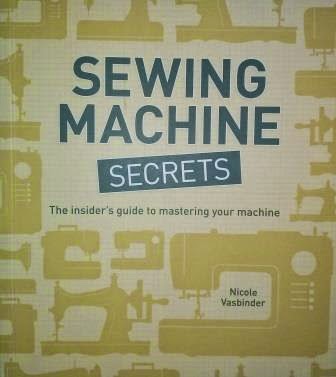The title of this post is a sentiment I had on a t-shirt from a friend years ago (where is that shirt now?) and it continues to resonate as I grow older. The list gets longer, not shorter with each book I read so how does that happen? While we were in Portland one of the landmarks is Powell's Books, a huge independent bookstore that has remained in business when others have closed their doors. While we can blame that on Amazon, this mega-book dealer has also enabled small dealers to thrive so I don't want to vilify Amazon either. Powell's downtown Portland store is called
Powell's City of Books and it does seem to be its own small city, taking up the whole city block with multiple levels that you need a map to navigate. I went right up to the sewing section and found something you don't find at other bookstores: old
and new books. They buy used books and include them for your browsing and buying pleasure. It was exciting to see some of the vintage books I've written about in
an earlier post as well as those I've only heard about. I restrained myself and only bought two books and made note of a third title I coveted. My husband bought some very good gardening books (as well as a cribbage board so I could finally learn).
On the flight home I read cover to cover The Encyclopedia of Sewing Machine Techniques:
 |
| The Serger's Technique Bible by Julia Hincks and Encyclopedia of Sewing Machine Techniques by Nancy Bednar & JoAnn Pugh-Gannon | | | | |
|
It was a wonderful book from applique to tucks on how to use your sewing machine and special presser feet or needles or thread to create special effects. Lace insertion was not enough: it included how to make your own lace with your sewing machine! It's not often you want to read an encyclopedia, but it was a great ride home with Bednar & Pugh-Gannon's book.
Since I now have five sergers, The Serger's Technique Bible explained the types of stitches and showed how they should look and what they are best used for. As with so many things, I just dove into sergers without much practical experience and this book helped me see what had only been written about in some of my serger manuals. What are all those special feet for and what is a cover stitch? Now I know for sure (but I'm not sure if I have a serger that can do a cover stitch!)
There was one book I ordered from Amazon that I looked at while at Powells but determined it wasn't worth the $25 cost. That's right, I got it for only a dollar plus $4 shipping. You can call me cheap, that's okay, but I had already supported the independent bookstore enough for one trip.
 |
| SM Secrets by Nicole Vasbinder |
I don't think these are actual secrets but more about how to use your machine to its fullest. There is discussion about pros and cons of vintage and new sewing machines that is fair, which features are essential (adjustable needle position) and those that are considered optional (needle up/needle down).
Although I have had similar books in the past, the quality of the printing, illustrations, and photos are excellent in these newer versions. For a sewer who has been at it for awhile, the Secrets book would be a nice read, and those new to serging could put the Serger's Bible into use, but the advanced sewer could really get lost in the Encyclopedia of SM Techniques. Have you read a novel that was so good you hated to see it come to an end? When you read one of the books reported on in this post it doesn't have to come to an end: now you can go practice on your sewing machine to see if you can master any of the new ideas that have intrigued you. And now I bid you adieu as I move from my computer to my sewing machine to try out "off the edge scallops."


No comments:
Post a Comment